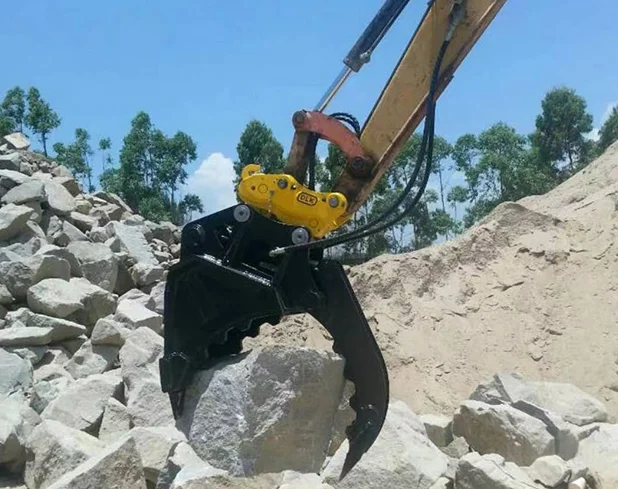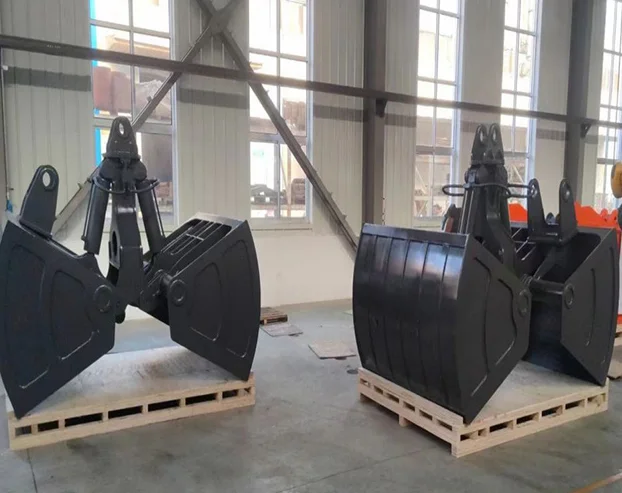Guide to Understanding the Wear Benefits of a Cutting Edge on an Excavator Bucket
Having a strong cutting edge on an excavator bucket is a game-changer. It seriously bumps up the bucket’s ability to resist wear and tear while making the whole operation smoother. Think of it as a tough barrier that takes the hardest hits and scrapes, keeping the bucket’s main body safe. This not only makes the bucket last longer but also cuts down on repair bills over time. Plus, it helps dig into hard stuff more easily, reduces spills, and keeps things steady during tough jobs. All of this adds up to better output, safer work, and a solid payoff for all kinds of digging tasks.

Why Does a Cutting Edge Improve Wear Resistance?
A cutting edge isn’t just some extra piece slapped onto your excavator bucket. It’s a key part that seriously lifts both how well it works and how long it lasts. Whether you’re shoveling through sandy soil or breaking rocky patches, adding this feature is a wise choice rooted in good, practical know-how.
Enhanced Durability Through Reinforced Steel Edges
The cutting edge catches the worst of the impact when your bucket slams into the ground. By beefing up this area with rugged, top-notch steel, you save the bucket’s main material from getting beat up too fast. For buckets used in heavy earthmoving, the parts that get hammered the most are often made with thick steel plates. They might even get added shields or special hardening to make rock buckets hold up better in harsh, gritty spots.
Reduced Abrasion on High-Contact Zones
When you’re digging or loading materials, cutting edges take on most of the rubbing and grinding. They act like a tough guard, soaking up the damage so the bucket’s core doesn’t wear out quickly. This keeps the bucket in decent shape for a much longer stretch.
Increased Structural Longevity of the Bucket
By protecting the spots that wear down fastest with edges you can replace, you’re giving your gear a longer life. Honestly, swapping out a worn cutting edge is a lot cheaper than fixing or replacing an entire bucket that’s been ground down from constant use.
How Does a Cutting Edge Affect Excavation Efficiency?
Doing a good job with excavation isn’t only about speed. It’s also about being accurate, saving effort, and not overworking your machine. A cutting edge plays a big part in hitting these goals.
Improved Penetration into Compact Materials
A sharp, hardened edge slices through tight-packed dirt or gravel way easier than a worn-out bucket lip ever could. This cuts down on the resistance from the ground. So, your machine digs quicker and doesn’t stress its hydraulic parts as much.
Minimized Material Loss During Digging
Cutting edges help keep your digging clean and neat. They carve out smooth lines in the soil, so less stuff falls out. More of the load stays inside the bucket instead of spilling everywhere. This is really helpful with loose or grainy materials, like what the Shell Bucket is built for. Made with tough NM500 wear-resistant steel, it’s strong enough to handle the grind and still keep things running smoothly.
Optimized Load Capacity and Cycle Times
With sharper cutting and less mess, every scoop gets more done. You can carry bigger loads without much trouble. This saves on fuel and boosts how much work you finish in an hour.
What Role Does a Cutting Edge Play in Cost Management?
In fields like construction or mining, keeping expenses under control is always a big deal. A solid cutting edge helps trim costs in a few down-to-earth ways.
Lower Maintenance and Repair Frequency
Since cutting edges absorb most of the rough treatment, they protect more expensive bits like side panels or the base plate from getting trashed. That means fewer breakdowns. And you won’t need to patch things up as often, which saves both time and money.
Extended Service Life of the Excavator Bucket
By shielding the bucket’s main frame from heavy wear, cutting edges make everything last longer. Good quality and a long-lasting setup aren’t just nice promises—they’re real perks when you use these edges properly.
Reduced Downtime and Operational Interruptions
Every second spent fixing or changing buckets is time you’re not getting stuff done. Cutting edges lower this hassle since they’re usually quick to switch out. Often, you can replace them without even unhooking the whole bucket from the machine.
How Do Different Kingho Buckets Benefit from Cutting Edges?
Every type of excavator bucket deals with its own kind of tough stuff on the job site. And each one gets a special lift from having a sturdy cutting edge worked into its build.
Look at the Earth Bucket, for example. It’s designed for rough, challenging spots where staying power is key. Built with high-strength steel plates, it holds up against wear and stays reliable. This makes it a great pick for hard soil or mixed gravel tasks. Here, strong edges keep it from wearing down too fast.
Then you’ve got the Shell Bucket, which shines when handling bulk materials like sand or crushed stone. Its double-cylinder connecting rod design offers flexible motion. But what keeps it tough under constant scraping is the NM500 steel it’s made from. Add hardened edges to that, and you’ve got a solid mix for lasting strength.

For jobs needing a mix of tasks—like grabbing stuff or digging in gravel pits or demolition zones—the Clamp Bucket comes in handy. Made with Q345 manganese plate, it’s adaptable and pairs well with reinforced edges. This combo gives it both a firm grip and the ability to cut through surfaces with ease.
Why Should You Choose Kingho’s Excavator Buckets with Cutting Edges?
If you’re looking for equipment that mixes durability with smart design, going with a trusted name like Kingho is a no-brainer. They’ve got over a decade of know-how in building clever tools for excavators. Their good name comes from high-quality work, backed by stamps of approval like ISO9001, CE, SGS, and BV.
Kingho understands that no two customers are the same. That’s why they let you tweak product details, shapes, and working ranges to fit your needs. This means their gear matches your exact job site, whether it’s a city build or a mining project. On top of that, their stuff works nicely with modern hydraulic setups, giving you better handling no matter the ground. Honestly, that kind of adaptability is tough to find elsewhere.
How Does a Cutting Edge Contribute to Safety and Stability?
Safety isn’t just about keeping the driver out of danger. It’s also about how well the machine holds together under stress. A well-placed cutting edge boosts both balance and how the gear handles during tough work.
Consistent Ground Contact Reduces Operational Vibration
A smooth, even edge keeps the bucket steady when it hits the dirt for digging or leveling. This cuts down on wobbly shakes that might travel up to the boom arm or the cab. So, the operator doesn’t get as worn out, and the machine’s joints stay in better condition over time.
Enhanced Control When Operating in Harsh Terrains
Whether you’re busting through frozen ground or working on rocky hills, a sharp edge grips the surface better as you start digging. This leads to smoother actions without slipping or sudden jolts that could throw the excavator off balance.
Stable Performance Across Multiple Excavation Tasks
From slicing trenches to filling them back in, steady work counts a lot. A hardened edge keeps things consistent, no matter the soil type. This gives you confidence, even when time’s tight or the weather gets ugly.
What Are the Long-Term Operational Benefits?
Beyond just getting through today’s tasks, there’s real value in the long run. Think of it as steady output and getting more worth from your money by keeping your tools in great shape.
Sustained Productivity Over Extended Usage Cycles
Buckets with toughened edges keep doing their job well for a long time before needing big fixes. This keeps your work sites humming along, even with heavy loads over months or years. I’ve seen gear like this stay strong on brutal jobs, and it’s honestly pretty cool to watch.
Compatibility with Modern Excavator Attachments
Nowadays, excavators often swap between tools like grapples or breakers several times a day. Buckets need to keep up. Strong cutting edges make sure they do, without losing their bite during quick changes or when linking to hydraulic gadgets.
Increased Return on Investment Through Equipment Preservation
Every extra hour your bucket runs without breaking adds value to what you paid for it. Solid builds protect against early damage, so every dollar you spent keeps giving back over time.
FAQ
Q1: Can I retrofit my existing excavator bucket with a new cutting edge?
A: Sure, most standard buckets can be fitted with bolt-on or weld-on cutting edges, depending on their make. Just double-check with your maker about the best match for your machine’s size and how you use it.
Q2: Which type of steel should I prioritize when selecting an excavator bucket?
A: If you’re tackling rough, gritty jobs, pick materials like NM500, used in Shell Buckets, or Q345 manganese plate, found in Clamp Buckets. Both are known for being super tough and standing up to wear.
Q3: How often should I replace my cutting edge?
A: It depends on how hard you’re working it. But for heavy-duty stuff, take a peek at it weekly. Look for thinning or bending, so you can change it out before it totally gives out.

